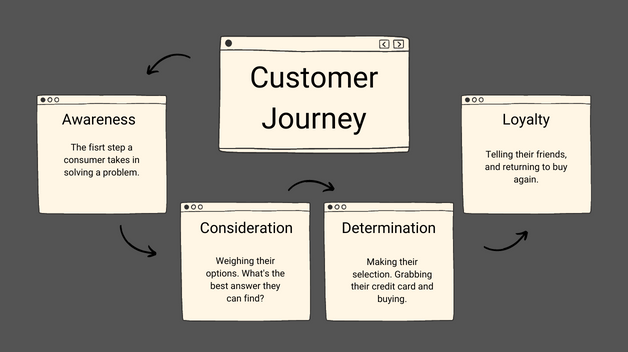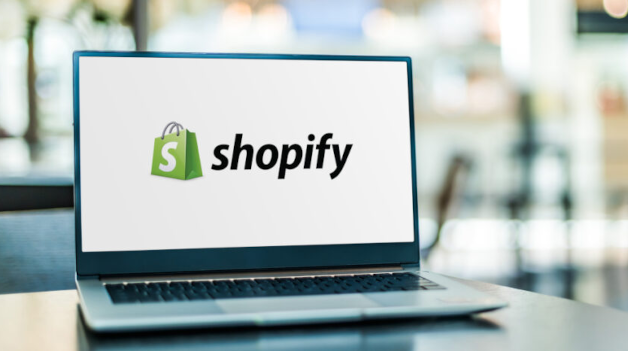The path to purchase on the modern web is complicated. Frequently, it involves multiple searches, app and website visits, and offline activities. So how can your e-commerce store’s SEO influence the buying decision?
Organic traffic can go a long way towards lowering our customer acquisition costs (CAC), so getting the process right can go a long way towards profitability. Let’s start with a list of things we can do to meet every customer “where they are” in their buying journey.
Table of Contents
CAC, Semantic Search and the Buying Journey
We all know that engaging people through paid ads is becoming more expensive, and in a lot of ways, less valuable to website owners. Facebook and Google aren’t really giving us the levers to pull that they used to, and we’re not getting as much data to learn from like we did in days past.
To that end, it would be wise for an e-commerce store to OWN the top of the funnel organically.
Let’s use the commonly accepted steps in the path to purchase:
- Awareness
- Consideration
- Decision
- Loyalty
From an SEO perspective, we’ll also assume we have optimized our product and category pages for the Decision stage. That leaves the top of the funnel to be worked on.
Awareness & Consideration can be handled by your blog. Consider a water bottle company that sells items that are supposed to keep water cold. We can have the following blog posts written:
Did You Know Your Water Bottle Can Keep Water Cool and Refreshing?
That’s awareness in a nutshell.
Then we fill in the Consideration phase with posts like this:
The Three Best Water Bottles for Mountain Bikers Under $50
If we do this for items throughout our catalog, we’re bound to grow organic sales incrementally over time. And that will lower your overall CAC.
Awesome, right?
PRO TIP: It doesn’t stop there! You can create tons of content to create brand loyalty. Like tips for cleaning your water bottles, how to extend their life, and FAQ pages that your customer service (and probably social media) teams can help you flesh out.
Useful Content To Sell Your Product and Lower CAC
So how do we write this content to meet user intentions as well as sell your product?
In short, useful content solves a problem, and/or answers a question. That means that on a product or category level we need to write content that:
- Boosts awareness by fully describing the PROBLEM people are facing, and our proposed solution.
- Influences their CONSIDERATION of our solution by informing and entertaining them, ensuring we are top of mind when they move into the decision phase.
It might almost be easier to say: Don’t just write another product page. Specs and features are great, but what we’re doing here is telling our product’s story, and why it should be a no-brainer for the reader to consider us when it’s time to take action.
And let’s not forget the word “useful”. It’s become a bit of a buzzword in the SEO industry lately after recent 2022 Google updates.
Useful content in the Awareness & Consideration phases will talk about a lot more than just your product. There’s room here to establish yourself as the authority, and make sure the reader doesn’t have to look ANYWHERE ELSE to solve their issue. We’ve got them covered.
Remember: It’s Awareness and Consideration. It’s not our sales page. In e-commerce, that’s left for the Decision page, which are your products and categories. That’s where we push the hard sell.
Done right, we’ve captured a lot of potential buyers by collecting emails or garnering social follows without paying for any ads. That’s huge for CAC.
On-Site Linking Strategies for the Customer Journey
In general, people are going to do things on their own schedules. So someone in the awareness phase, just seeking a solution to their problem, might not be ready to start considering an actual purchase today.
However, as we build out our SEO content, we should have a mechanic on-page that SUGGESTS they can move to the next step.
For example, at the bottom of an Awareness post, we can have a callout box featuring your Three Best Water Bottles under $50. Make it obvious. Make it stand out. That way, you can help shape the journey through SEO and excellent writing.
You should also consider links to specific products and categories, especially on Consideration themed pages. They’re one step closer to buying, so feel free to give them a little push.
SEO, CAC, and KPIs
Lastly, let’s talk about how we measure success. If we’re looking to lower our digital customer acquisition costs through SEO, there are few metrics we can employ:
- Increased organic sales, for sure
- Impact on social media followers from our SEO content
- Email signups from those pages
- Social sharing of our posts
Each of these KPIs, when being achieved, will lower our overall cost of digital customer acquisition, and go a long way towards making our e-commerce stores more profitable.
Read more about using Enterprise E-commerce SEO to Lower your Customer Acquisition Costs






